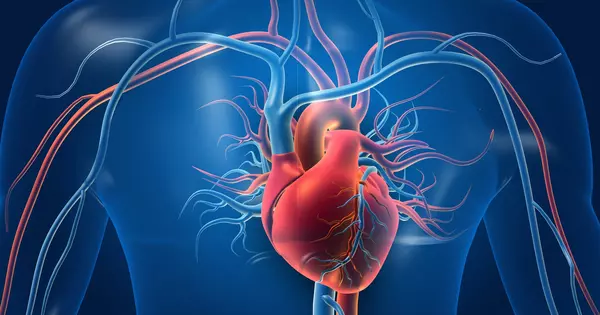For the first time in mice, researchers demonstrated that heart problems associated with the flu are not caused by raging inflammation in the lungs, as had previously been predicted. Instead, the electrical malfunctions and heart scarring seen in some of the sickest flu patients, according to the Ohio State University study, are caused by direct influenza infection of cardiac cells.
Previous research had found flu viral particles in cardiac cells of infected mice, but the team couldn’t be certain that their presence in the heart was causing cardiac damage. When scientists infected mice with a genetically altered flu virus that couldn’t replicate in heart cells, the mice developed classic inflammatory flu symptoms but no cardiac complications.
“We showed that even when you have a very severe infection in the lungs, if you’re using that virus that can’t replicate in the heart, you don’t get those cardiac complications,” said lead author Jacob Yount, associate professor of microbial infection and immunity in Ohio State’s College of Medicine.
“It demonstrates that the complications are caused by a direct infection of the heart. We must now determine what direct infection does: does it kill heart cells? Is it going to have long-term consequences? Do repeated infections result in heart complications that worsen over time? We now have a lot of questions to answer.”
We have this mouse model and this virus, which allowed us to distinguish between severe lung inflammation and direct virus replication in the heart. We hadn’t been able to separate those two things in the past. If the virus is not replicating strongly in the heart, you do not see the same electrical abnormalities or fibrotic response.
Jacob Yount
The findings have been published in the journal Science Advances. It has long been known that hospitalized flu patients can develop heart problems. According to a 2020 study, approximately 12% of adults hospitalized with the flu in the United States over an eight-year period developed sudden, serious heart complications.
Yount has studied flu for years, and his lab developed a mouse model lacking IFITM3, the gene that codes for a key protein in the innate immune system’s clearance of viral infections. His team found in a 2019 study that flu-infected mice lacking the IFITM3 gene were at higher risk for developing cardiac issues.
These mice are not only highly susceptible to flu, but they also lack the same antiviral protein that some people lack: A genetic variant that causes IFITM3 deficiency affects approximately 20% of Chinese people and 4% of Europeans.
“We know those people are more susceptible to severe flu infections, and our mouse research would suggest they’re also more susceptible to heart complications with the flu,” said Yount, who is also a program co-director of Ohio State’s Infectious Diseases Institute’s Viruses and Emerging Pathogens Program.

The researchers altered the genome of an H1N1 flu strain for this study so that the virus could not hijack heart cells to replicate itself. They injected normal mice and mice lacking IFITM3 with the altered virus and a control virus.
Both viruses caused lung and systemic inflammation and produced large amounts of viral particles in the mice, but the altered virus went undetected in normal mouse heart cells and was present in much lower concentrations in IFITM3-deficient mouse hearts. These findings enabled direct comparisons of mice hearts with and without robust virus replication.
The researchers discovered less heart muscle damage, lower biomarkers for cell injury, less scarring or fibrosis of heart tissue, and fewer electrical signaling issues in the hearts of mice given the genetically altered virus.
“We have this mouse model and this virus, which allowed us to distinguish between severe lung inflammation and direct virus replication in the heart. We hadn’t been able to separate those two things in the past “Yount stated “If the virus is not replicating strongly in the heart, you do not see the same electrical abnormalities or fibrotic response.”
There is still much to discover. Influenza spends the majority of its time infiltrating the lungs, but it is rarely found in the blood or other organs. But it does get to the heart – and figuring out how this happens is part of Yount’s ongoing research.
It’s too early to say how this research will affect the treatment of hospitalized flu patients with cardiac complications, but Yount believes that clearing the viral infection is key to reducing flu’s problematic effects on the heart. “One thing this tells us is that this is yet another reason to get your flu shot, because you don’t want the flu to infect your heart, which is a possibility,” he said.
















